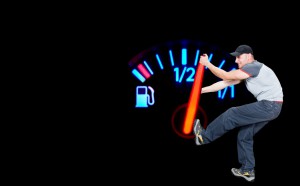When we think of good gas mileage we often think of small compact vehicles and often hybrid and electric vehicles. As true as these resources are, automotive companies are doing more than just this while adding in some uncommon factors. Automakers are employing a number of technologies to improve fuel economy. These range from turbocharging an engine, to improving the transmission, to electrifying specific components.
To improve fuel economy it goes beyond an idea. Beyond the ideas of electric or hybrid but to the point where engineers are looking at every part of the drive cycle to see where changes can be made. Often, cars that have superchargers and turbochargers on top of various transmissions see the need for higher, more expensive, grade fuels and tend to burn these expensive grades faster due to high engine power. Instead of directing attention away from these things, engineers are now actually looking to use these uncommon parts in hopes of increasing fuel economy. Through refining superchargers and turbos, they are taking advantage of new materials and computing power. With the help of newer innovations such as idle stop and dual-clutch transmissions, these old chargers are becoming the best way to save fuel, and money.
“A number of factors are helping push these developments. Consumers are trying to cope with increasing gas prices, and governments are pushing for reduced carbon dioxide emissions, which relate directly to fuel economy.” – Wayne Cunningham
Idle stop is one of the new innovations thats making a large impact on boosting fuel economy. Normally, when you pull up to a stop light or come to any sort of halt, your moves on its own even with your foot off the gas after releasing the break; this is called an idle. Idle stop saves fuel by shutting down the engine when the car is not moving, such as at a stop light. When you depress the foot brake for a stop, the engine shuts off. When you let the clutch out or take your foot off the brake, the engine starts up again. Idle Stops are still limited in full gas vehicles and see some issues but that stop german motor companies such as BMW from using. Idle-stop systems work poorly in stop-and-go traffic, where they cause engines to turn on and off multiple times within minutes. As this posses a bit of an annoyance, for most drivers this is still worth while.
Dual-Clutch Transmissions, derived from race car technology, combines the efficiency of a manual transmission with the convenience of an automatic. The dual-clutch transmission uses two clutches to grab gears more efficiently; one grabbing the even number gears, and the second grabbing the odd. When one clutch has third gear engaged, for example, a computer looks at driver input to help it guess which gear should be engaged next, two or four, pre-positioning the second clutch over that gear. The major benefit, and purpose, of a dual-clutch transmission is to eliminate the delay time it takes a driver to to work a manual clutch pedal. Although primarily used on performance cars, dual-clutch transmissions are starting to be used for fuel efficiency.
“Technologies to Boost Gas Mileage Extend beyond Hybrid Cars.” Technologies to Boost Gas Mileage Extend beyond Hybrid Cars. N.p., n.d. Web. 25 Sept. 2013. <http://www.bankrate.com/finance/auto/hybrids-not-the-only-answer-1.aspx>.
“Energy Efficient Technologies.” Energy Efficient Technologies. N.p., n.d. Web. 25 Sept. 2013. <http://www.fueleconomy.gov/feg/tech_adv.shtml>.
“11 Technologies That Increase Fuel Economy.” The Car Tech Blog. N.p., n.d. Web. 25 Sept. 2013. <http://reviews.cnet.com/8301-13746_7-20113969-48/11-technologies-that-increase-fuel-economy/>.
